"Cachanga": GF Team's Secret Program For Producing Killer Competitors
"Cachanga": GF Team's Secret Program For Producing Killer Competitors
Known for their attacking style of jiu-jitsu, aggression and grit, GF Team in Rio de Janeiro has produced some incredible competitors.

Known for their attacking style of jiu-jitsu, aggression and grit, GF Team in Rio de Janeiro has produced some incredible competitors.
Founded in 2008 after the shutdown of the grappling program at Gama Filho University, GF Team quickly claimed a spot among the other elite teams in the world.
Based out of the neighborhood of Meier in Rio’s north zone, seventh degree red and black belt Julio Cesar Pereira formed an elite squad of jiu jitsu fighters.
At the core of this gyms evolution over the years has been a fellowship of athletes who either currently or previously lived in the GF Team HQ in Meier, a collective known as the Cachanga Bros.
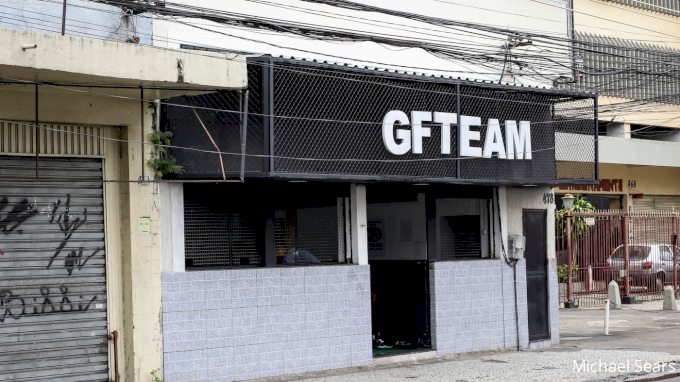
GF Team's gym in Rio de Janeiro
Being a part of Cachanga means you spent an extended period of time living on the mats at the gym in Meier, and members wear the black and white Cachanga patch on their gi as a badge of honor while competing.
What does Cachanga mean?
Cachanga is slang for house. Cachanga is used for a house or apartment where people from a lower financial / social class live. The students started calling the guys that lived there “Cachangeiros”, which means residents of the Cachanga. And that is how the name started for the project!
World medalists and champions such as Vitor Oliveira, Gutemberg Pereira, Jaime Canuto, Amanda Monteiro and Max Gimenis are among the Cachanga alumni, and the next generation of colored belts look poised to produce the same results. Most of them come from other cities in Brazil to pursue a higher level of training at GF Team, with Jake Mackenzie even relocating there from Canada.
“It was a dream of mine to be able to help the boys,” reflects Julio Cesar Pereira. “The first was Vitor [Oliveira], he was studying at a university in Rio de Janeiro while living in Teresopolis, having a very difficult life and basically abandoning jiu-jitsu. The gym had the structure that allowed him to sleep there, save money, and believe in jiu-jitsu. And thank God it worked out really well, today he is living his life way better, living from jiu-jitsu.”
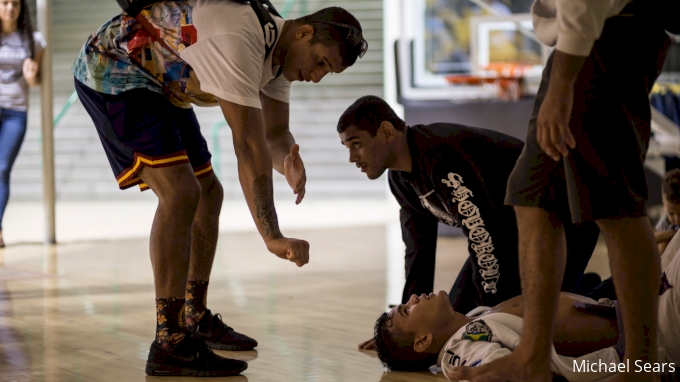
The Cachanga crew helping each other between matches at 2018 Worlds
Three-time IBJJF World black belt medalist Vitor Oliveira was the first Cachanga, relocating from the mountain city of Teresopolis in 2010. Two-time World bronze medalist Jaime Canuto was next in 2011, coming from the popular surfing town of Saquarema about an hour outside of Rio.
Going All In On A Dream
In 2011 Mackenzie and Gimenis would also move into the gym, in 2013 Gutemberg Pereira moved to Meier from Salvador, Bahia at only 18 years of age. Many other athletes would come and go over time, with as little as two or as many as a dozen sharing the small living quarters and calling the mats home.
“I’ve always been a fan of Rodolfo Vieira, and knew that GF Team had some of the best training in the country, so I asked Julio for the opportunity to train and live there,” recalls Gutemberg Pereira. “The training was hell, we had almost 25 black belts and an army of hungry colored belts in the +40ºc (104ºf) heat of Rio in a small place. I had nowhere to run. I was breathing jiu-jitsu, waking up, sleeping and eating on the mat. It was impossible not to evolve.”
Gutemberg’s sacrifice of moving away from friends and family has paid off so far, winning Worlds and Pans at both purple and brown belt while coming up through the ranks. Now, he’s among one of the best black belts in the world, getting a silver in the absolute division at the 2018 IBJJF Pans.
Training at GF Team
Canuto and Gimenis were also brown belt World champs before advancing to the black belt level. According to Canuto, “The training was always really tough, it was a war every day. When I arrived at the gym I was the punching bag. I trained all day. Drilling from 10 am to noon, sparring from 2:00 to 5:00, night training from 8:00-9:30. Many times I’d even train from 10 pm to midnight.”
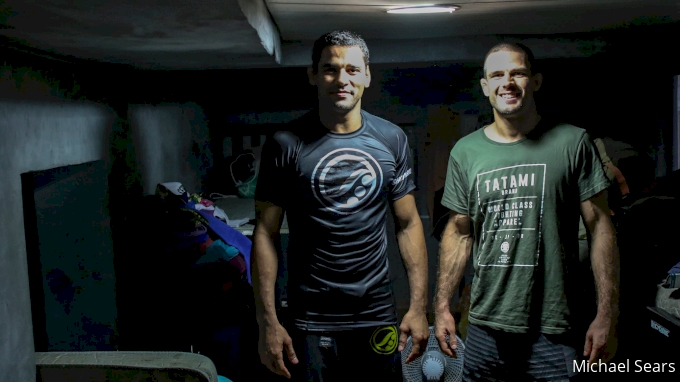
Jaime Canuto and Jake Mackenzie at the original dorm
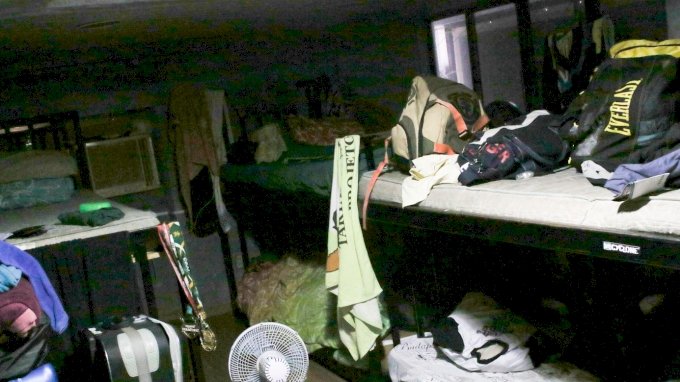
The original dorm at the Rio gym
The tradeoff of living in the gym, not worrying about bills and focusing solely on training was having to live in less than ideal conditions. With no way to prepare food or do laundry, no money and the blistering heat of Rio’s north zone, things weren’t always easy. The ceiling was so small that taller fighters like Gutemberg and Max could not even stand up straight in the small, cramped room above the mats that athletes would sleep in.
“Jaime and me lived in a room we cleaned out upstairs. I remember there were holes in the roof so we had to move our beds whenever it rained. Without AC in the summertime we would all sleep on the mat, everyone bunched up in the same area so you could get a little bit of the fan,” says Mackenzie. “It wasn’t ideal in a lot of aspects, but it was some of the best years of my life. The training is what made the sacrifice of living in the gym worth it.”
Hard Work Pays Off
Julio’s generosity has led to these young men not only being successful in competition but in life as well. Vitor, Max and Gutemberg have all relocated to the United States to teach in GF Team affiliate gyms. It is certainly a long way from the humble beginnings of their careers in Meier.
All signs point to Julio’s dream of producing athletes with this method continuing to have great success. The first female Cachanga product, Amanda Monteiro, burst onto the black belt scene in 2018, winning Worlds as well as the European and South American championships in her first year at black belt.
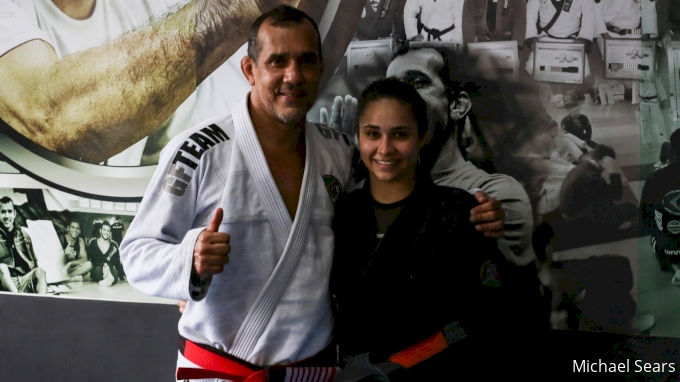
Julio Cesar Pereira with Amanda Monteirio
Monteiro had this to say about training under Julio: “My jiu-jitsu evolved a lot, both physically and mentally. He would never put pressure on me for results, just ask for me to give my best and focus on the training. That gave me more confidence and joy in the competitions.”
20-year-old Mauricio Oliveira has been one of the most dominant colored belts over the last three years, winning Worlds at blue, purple and brown belt in consecutive years. Oliveira, a lifelong friend of Gutemberg, relocated to Rio from Salvador at 16 years old to live in the gym, 1000 miles away from home.
WATCH: Mauricio Oliveira in action
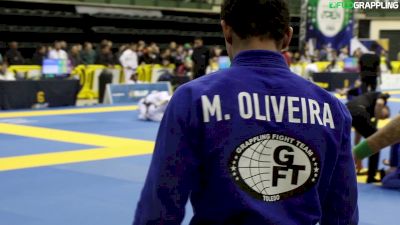
Carlos “Bebeto” Oliveira is another up and comer from the Cachanga Bros, winning Euros, Brasileiro and the World Pro in 2018 at brown belt. Both athletes were awarded their black belts from Julio shortly after Worlds.
The gym underwent extensive remodelling in 2017 and now boasts a much larger and more comfortable living area. While still spartan in nature it’s practically luxurious compared to what Canuto, Oliveira, Mackenzie and Pereira endured.
The Cachanga legacy is alive and well and a new wave of competitors is being created. “I think the boys from Cachanga work really hard,” say Julio Cesar. “Waking up and training, doing everything how it should be done, in a professional way. I think it was very successful, and still is.
“We have Vitor, Jaime, Jake, Max, Gutemberg, Amanda, Maurico and Bebeto, many Cachanga athletes who conquered the world. That makes me very happy, and if God allows we will make many more!”
Thanks to Deborah Bornia for help with translation.